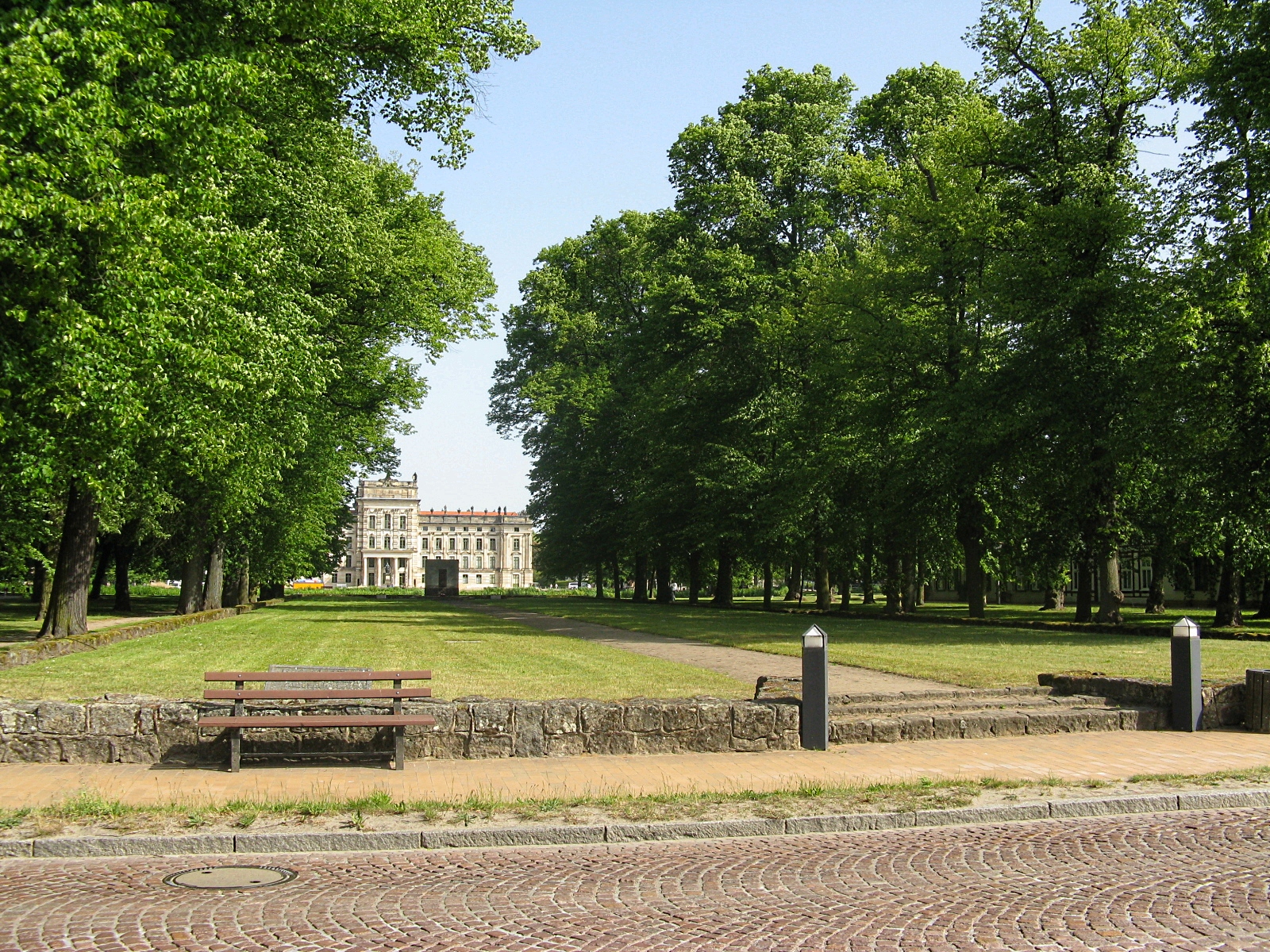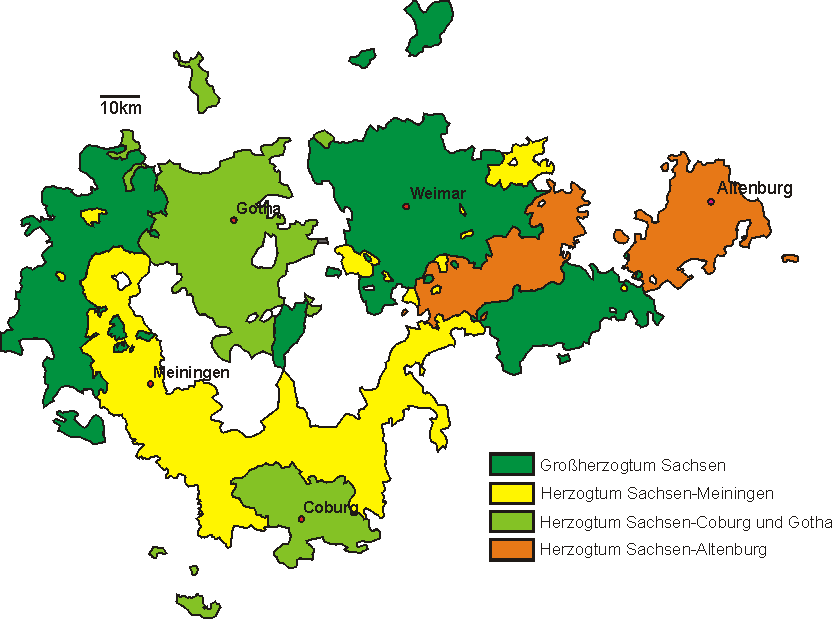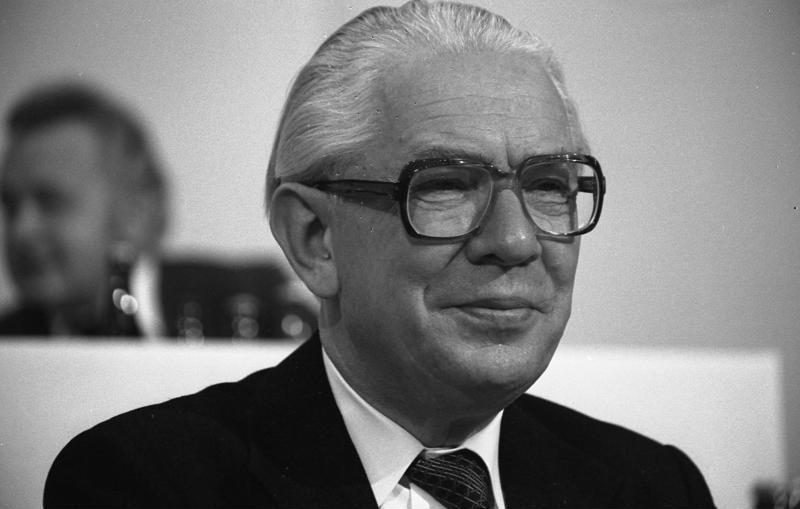|
Duke Christian Louis Of Mecklenburg-Schwerin
, house = Mecklenburg-Schwerin , father = Frederick Francis IV, Grand Duke of Mecklenburg , mother = Princess Alexandra of Hanover , birth_date = , birth_place = Ludwigslust, Mecklenburg-Schwerin , death_date = , death_place = Gut Hemmelmark, Germany , religion = Lutheranism Duke Christian Louis of Mecklenburg (german: Christian-Ludwig Herzog zu Mecklenburg; 29 September 191218 July 1996) was the second son of the last reigning Grand Duke of Mecklenburg-Schwerin, Frederick Francis IV. Early life He was born in Ludwigslust as the second child of the reigning Grand Duke of Mecklenburg-Schwerin, Frederick Francis IV, and his wife Princess Alexandra of Hanover, a daughter of Ernest Augustus, Crown Prince of Hanover and Princess Thyra of Denmark. Following the defeat of the German Empire in World War I, his father abdicated on 14 November 1918. After the abolition of the monarchy, in 1919 the family went at the invitation of Queen Alexand ... [...More Info...] [...Related Items...] OR: [Wikipedia] [Google] [Baidu] |
Duchess Donata Of Mecklenburg
Duchess Donata of Mecklenburg (born 11 March 1956) is the senior remaining member of the House of Mecklenburg-Schwerin. Since there are no males left in the family, the Schwerin branch itself is considered extinct due to the Salic law of succession, leaving Mecklenburg-Strelitz as the only remaining line of the House of Mecklenburg. Duchess of Mecklenburg She was born in Kiel in the state of Schleswig-Holstein the eldest daughter of Duke Christian Louis of Mecklenburg-Schwerin and his wife Princess Barbara of Prussia (1920-1994). Her father was the younger brother to the last surviving male of the House of Mecklenburg-Schwerin, Friedrich Franz, Hereditary Grand Duke of Mecklenburg-Schwerin. Her Mother was the daughter of Princess Charlotte of Saxe-Altenburg, the eldest daughter of Ernst II, the last duke of Saxe-Altenburg. Donata had only one sister Edwina (born 25 September 1960), and as her uncle had no children the House of Mecklenburg-Schwerin became extinct in the male lin ... [...More Info...] [...Related Items...] OR: [Wikipedia] [Google] [Baidu] |
Schloss Ludwigslust
Ludwigslust Palace (german: Schloss Ludwigslust) is a stately home or ''schloss'' in the town of Ludwigslust, Mecklenburg-Vorpommern, northern Germany. It was built as a hunting lodge, rebuilt as a luxurious retreat from the ducal capital, Schwerin, then became for a time (1765–1837) the center of government. It was the "joy" of Prince Christian Ludwig, the heir of the Duke of Mecklenburg-Schwerin, hence the name ''Ludwigslust''. Origins Ludwigslust had its origins in a simple hunting lodge within a day's ride (36 km) of the ducal capital, Schwerin. In 1724, Prince Christian Ludwig, the heir of the Duke of Mecklenburg-Schwerin, decided to build a hunting lodge on this site, near a hamlet called Klenow. Even after he became the reigning duke in his turn in 1747, he passed most of his time at this residence, which he called ''Ludwigslust'' ("Ludwig's joy"). ''Residenz'' In 1765, Frederick II, Duke of Mecklenburg-Schwerin made Ludwigslust the capital of the duchy instead of ... [...More Info...] [...Related Items...] OR: [Wikipedia] [Google] [Baidu] |
Saxe-Altenburg
Saxe-Altenburg (german: Sachsen-Altenburg, links=no) was one of the Saxon duchies held by the Ernestine branch of the House of Wettin in present-day Thuringia. It was one of the smallest of the German states with an area of 1323 square kilometers and a population of 207,000 (1905) of whom about one fifth resided in the capital, Altenburg. The territory of the duchy consisted of two non-contiguous territories separated by land belonging to the Principality of Reuss. Its economy was based on agriculture, forestry, and small industry. The state had a constitutional monarchical form of government with a parliament composed of thirty members chosen by male taxpayers over 25 years of age. History The duchy had its origins in the medieval Burgraviate of Altenburg in the Imperial Pleissnerland ''(Terra Plisensis)'', a possession of the Wettin Margraves of Meissen since 1243. Upon a partition treaty of 1485, Altenburg fell to Ernst, Elector of Saxony, the progenitor of the Ernestine We ... [...More Info...] [...Related Items...] OR: [Wikipedia] [Google] [Baidu] |
Prince Sigismund Of Prussia (1896-1978) : lived 81 years
{{Hndis, Sigismund of Prussia ...
Prince Sigismund of Prussia may refer to: *Prince Sigismund of Prussia (1864-1866): lived 22 months *Prince Sigismund of Prussia (1896-1978) Prince Sigismund of Prussia may refer to: * Prince Sigismund of Prussia (1864-1866): lived 22 months * Prince Sigismund of Prussia (1896-1978): lived 81 years {{Hndis, Sigismund of Prussia ... [...More Info...] [...Related Items...] OR: [Wikipedia] [Google] [Baidu] |
Glücksburg
Glücksburg (; da, Lyksborg) is a small town northeast of Flensburg in the district Schleswig-Flensburg, in Schleswig-Holstein, Germany and is the northernmost town in Germany. It is situated on the south side of the Flensborg Fjord, an inlet of the Baltic Sea, approx. 10 km northeast of Flensburg. The town was originally the home of the family '' Schleswig-Holstein-Sonderburg-Glücksburg'' (or simply ''Glücksburg''), members of which have reigned in the past in Greece and several northern German states. Members of the family still reign in Denmark and Norway since 1863 and 1905 respectively. Glücksburg was home to a German Navy base. Among the facilities at the base is the transmitter, callsign DHJ58. DHJ58, situated at 54° 50'N and 9° 32' E, ceased its transmissions on longwave frequency 68.9 kHz in 2002 and in 2004 its longwave antenna was disassembled. Notable people * Kai-Uwe von Hassel (1913-1997), politician (CDU), was mayor of Glücksburg, Minister President ... [...More Info...] [...Related Items...] OR: [Wikipedia] [Google] [Baidu] |
Soviet Union
The Soviet Union,. officially the Union of Soviet Socialist Republics. (USSR),. was a transcontinental country that spanned much of Eurasia from 1922 to 1991. A flagship communist state, it was nominally a federal union of fifteen national republics; in practice, both its government and its economy were highly centralized until its final years. It was a one-party state governed by the Communist Party of the Soviet Union, with the city of Moscow serving as its capital as well as that of its largest and most populous republic: the Russian SFSR. Other major cities included Leningrad (Russian SFSR), Kiev (Ukrainian SSR), Minsk ( Byelorussian SSR), Tashkent (Uzbek SSR), Alma-Ata (Kazakh SSR), and Novosibirsk (Russian SFSR). It was the largest country in the world, covering over and spanning eleven time zones. The country's roots lay in the October Revolution of 1917, when the Bolsheviks, under the leadership of Vladimir Lenin, overthrew the Russian Provisional Government ... [...More Info...] [...Related Items...] OR: [Wikipedia] [Google] [Baidu] |
Prisoner Of War
A prisoner of war (POW) is a person who is held captive by a belligerent power during or immediately after an armed conflict. The earliest recorded usage of the phrase "prisoner of war" dates back to 1610. Belligerents hold prisoners of war in custody for a range of legitimate and illegitimate reasons, such as isolating them from the enemy combatants still in the field (releasing and repatriating them in an orderly manner after hostilities), demonstrating military victory, punishing them, prosecuting them for war crimes, exploiting them for their labour, recruiting or even conscripting them as their own combatants, collecting military and political intelligence from them, or indoctrinating them in new political or religious beliefs. Ancient times For most of human history, depending on the culture of the victors, enemy fighters on the losing side in a battle who had surrendered and been taken as prisoners of war could expect to be either slaughtered or enslaved. Ear ... [...More Info...] [...Related Items...] OR: [Wikipedia] [Google] [Baidu] |
Konrad Adenauer
Konrad Hermann Joseph Adenauer (; 5 January 1876 – 19 April 1967) was a Germany, German statesman who served as the first Chancellor of Germany, chancellor of the Federal Republic of Germany from 1949 to 1963. From 1946 to 1966, he was the first leader of the Christian Democratic Union (Germany), Christian Democratic Union (CDU), a Christian democratic, Christian-democratic party he co-founded, which became the dominant force in the country under his leadership. A devout Roman Catholic and member of the Catholic Centre Party (Germany), Centre Party, Adenauer was a leading politician in the Weimar Republic, serving as Mayor of Cologne (1917–1933) and as president of the Prussian State Council (1922–1933). In the early years of the Federal Republic, he switched focus from denazification to recovery, and led his country from the ruins of World War II to becoming a productive and prosperous nation that forged close relations with France, the United Kingdom and the United States ... [...More Info...] [...Related Items...] OR: [Wikipedia] [Google] [Baidu] |
Lubyanka (KGB)
The Lubyanka ( rus, Лубянка, p=lʊˈbʲankə) is the popular name for the building which contains the headquarters of the FSB, and its affiliated prison, on Lubyanka Square in the Meshchansky District of Moscow, Russia. It is a large Neo-Baroque building with a facade of yellow brick designed by Alexander V. Ivanov in 1897 and augmented by Aleksey Shchusev from 1940 to 1947. It was previously the national headquarters of the KGB. Soviet hammer and sickles can be seen on the building's facade. Description The Lubyanka building is home to the Lubyanka prison, the headquarters of the Border Guard Service, a KGB museum, and a subsection of the FSB. Part of the prison was turned into a prison museum, but a special authorization is required for visits. The lower floors are made of granite with emblazoned Soviet crests. History Origins The Lubyanka was originally built in 1898 as the headquarters of the All-Russia Insurance Company (''Rossiya Insurance Company''), ... [...More Info...] [...Related Items...] OR: [Wikipedia] [Google] [Baidu] |
Moscow
Moscow ( , US chiefly ; rus, links=no, Москва, r=Moskva, p=mɐskˈva, a=Москва.ogg) is the capital and largest city of Russia. The city stands on the Moskva River in Central Russia, with a population estimated at 13.0 million residents within the city limits, over 17 million residents in the urban area, and over 21.5 million residents in the metropolitan area. The city covers an area of , while the urban area covers , and the metropolitan area covers over . Moscow is among the world's largest cities; being the most populous city entirely in Europe, the largest urban and metropolitan area in Europe, and the largest city by land area on the European continent. First documented in 1147, Moscow grew to become a prosperous and powerful city that served as the capital of the Grand Duchy that bears its name. When the Grand Duchy of Moscow evolved into the Tsardom of Russia, Moscow remained the political and economic center for most of the Tsardom's history. When th ... [...More Info...] [...Related Items...] OR: [Wikipedia] [Google] [Baidu] |
Schleswig-Holstein
Schleswig-Holstein (; da, Slesvig-Holsten; nds, Sleswig-Holsteen; frr, Slaswik-Holstiinj) is the northernmost of the 16 states of Germany, comprising most of the historical duchy of Holstein and the southern part of the former Duchy of Schleswig. Its capital city is Kiel; other notable cities are Lübeck and Flensburg. The region is called ''Slesvig-Holsten'' in Danish and pronounced . The Low German name is ''Sleswig-Holsteen'', and the North Frisian name is ''Slaswik-Holstiinj''. In more dated English, it is also known as ''Sleswick-Holsatia''. Historically, the name can also refer to a larger region, containing both present-day Schleswig-Holstein and the former South Jutland County (Northern Schleswig; now part of the Region of Southern Denmark) in Denmark. It covers an area of , making it the 5th smallest German federal state by area (including the city-states). Schleswig was under Danish control during the Viking Age, but in the 12th century it escaped full control ... [...More Info...] [...Related Items...] OR: [Wikipedia] [Google] [Baidu] |
Glücksburg Castle
Glücksburg Castle (German: Schloss Glücksburg, Danish: ''Lyksborg Slot'') is one of the most significant Renaissance castles in Northern Europe. The castle was the headquarters of the ducal lines of the house of Glücksburg and temporarily served as the primary residence of the Danish monarch. The building is in the town of Glücksburg, located in Northern Germany on the Flensburg Firth. The structure is a water castle. The ducal house of Glücksburg derived its name from the castle and its family members are related to almost all European dynasties. Nowadays, the castle is one of the most famous sights in the German state of Schleswig Holstein. Within the castle is a museum which is open to the public. Glücksburg Castle History From the Ryd Abbey to Glücksburg Castle The history of today's castle grounds began in Schleswig in 1192, when the double monastery of St. Michael auf dem Berge was dissolved. The nuns then moved to the St. John's Monastery in Schleswig, which ... [...More Info...] [...Related Items...] OR: [Wikipedia] [Google] [Baidu] |







